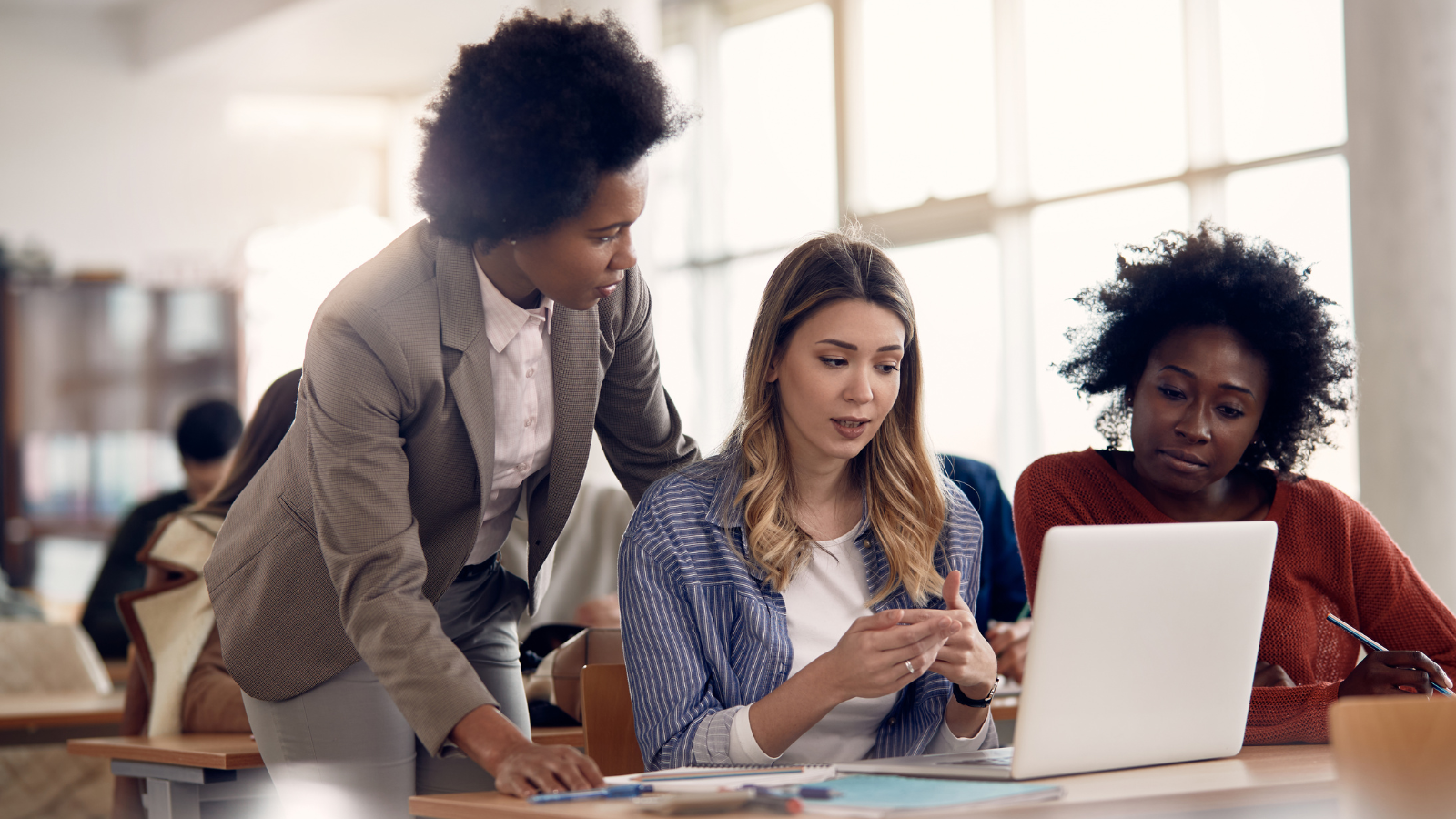Anti-deficit teaching practices acknowledge and draw on the positive possibilities of a student’s experiences, traits, knowledge, community, and other resources. It’s a teaching methodology that encourages students to identify the resources and experiences that contribute to their achievements. In this way, anti-deficit teaching inverts the customary framing in college and university classrooms that highlights gaps and the barriers to overcoming them.
Anti-deficit teaching is both proactive and ongoing as students continually reflect on and understand their strengths and assets. Anti-deficit teaching practices include reframing course materials and design, incorporating culturally relevant pedagogy, and fostering a culture of progress toward ambitious goals.
Anti-deficit teaching (sometimes called counter-deficit teaching) may be thought of as similar to a constellation of related concepts that emphasize “what’s strong, not what’s wrong”: assets-based teaching, also known as strengths-based teaching, cultural wealth approaches, also known as cultural capital approaches, and cultural mismatch theory.
The development of these concepts has been heavily influenced by Tara Yosso’s 2004 article, Whose Culture Has Capital? A Critical Race Theory Discussion of Community Cultural Wealth, which theorizes a mix of assets that can empower students if classrooms and institutions make room for them.
Why are anti-deficit teaching practices important?
Higher education tends to default to deficit framing such as:
- achievement gaps
- lacking readiness or low readiness
- limited skills
- lacking ambition
Deficit framing is corrosive to learning and sustains inequities. By organizing instruction and assessment around what a student seemingly lacks, an instructor or institution starts with and reinforces existing norms and structures that ought to be investigated and challenged.
Deficit framing is often hidden in a discourse of impartiality or universality. As What Our Best College Instructors Do: Reflections By Students About Meaningful College Experiences argues, any teaching that is not intentionally inclusive cannot be universally “good” but only good for the student demographic it was designed around. Anti-deficit teaching practices call into question presumed universally good practices. They therefore avoid assuming deficits relative to those universally good practices.
Advantages of anti-deficit teaching practices
Anti-deficit framing surfaces the valuable resources students do have that are often obscured by deficit framing:
- Multiple language practices
- Command of cultural practices and creative forms that higher education hasn’t welcomed
- Family and community support
- Individual goals and ambitions
By emphasizing those resources, anti-deficit teaching potentially empowers students. Anti-deficit teaching often highlights a student’s potential and the high expectations instructors have for them. For example, a National Center for Education Statistics’ Education Longitudinal Study followed a nationally representative sample of 10th grade students from 2002 to 2012 and found that:
- students whose teachers had higher expectations for their success were far more likely to graduate from college;
- teachers tend to have lower expectations for minoritized students as compared to their affluent, white peers; and
- programs for college preparation and other opportunities that support higher expectations are notable predictors of college graduation rates.
On top of creating more equitable outcomes for racially and ethnically minoritized students, anti-deficit teaching practices have been shown to improve educators’ ability to connect with and impact students. A 2017 report from the Journal on Excellence in College Teaching found that anti-deficit pedagogy in graduate programs graduated educators who were more exposed to diversity, inclusion, and equity issues.
Anti-deficit practices in the classroom
Because of the prevalence of deficit thinking in higher ed, educators should prepare to restructure the classroom without recourse to narratives of “college readiness” or of “fixing” students. For educators looking to utilize anti-deficit teaching in their classrooms, several key practices stand out.
In an interview about her co-authored book Dismantling Deficit Thinking in Academic Libraries, Chelsea Heinback said faculty who use anti-deficit practices honor prior knowledge, center social interaction and community knowledge, and work against systems of educational oppression.
For example, instead of assuming students don’t know how to research, start with the ways they do use research skills every day to seek employment, navigate the academy, or pursue their personal interests.
Similarly, digital multimodal composition, instead of starting with a seeming lack of writing skills, starts with the composition skills (often in emerging media or art forms) that students have mastered or are engaged in, and builds from there.
Another example of anti-deficit teaching is designing learning and research opportunities that involve collaborations with home communities.
Examples of employing these assets-based practices in anti-deficit teaching could look like:
- Changing the language surrounding course design and program planning (language barrier vs. language difference; low proficiency vs. developing proficiency; at-risk students vs. students)
- Incorporating culturally relevant pedagogy that encourages student reflection on their own cultural capital
- Maintaining high expectations for students while fostering a culture that enables them to succeed
By creating an anti-deficit environment for students, educators create a safe space that encourages discussion around other issues such as food insecurity or the unnecessary stigma around student support services.
In short, anti-deficit teaching starts by asking what students are proficient at, what readiness they do have, and how the college classroom can activate those resources in support of the learning objectives.
Download What Our Best College Instructors Do: Reflections By Students About Meaningful College Experiences

